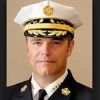I know we’re all thankful this isn’t a story about a fire apparatus crash with resulting firefighter injuries, or worse. Kudos to the engine driver for quickly recognizing a dangerous situation and taking action to avoid what might otherwise have been a horrific collision.
I have to admit, however, that as I watched the video clip I wasn’t really surprised.
Actually, I’ve learned to never be surprised by anything another driver does when encountering an emergency vehicle. It doesn’t matter if the rig is running with or without operating warning lights and sirens; stopped or moving; on a busy highway or rural road; driving at day or night; marked or unmarked; or painted lime green, yellow, red, white, etc.
In fact, from my experience the only thing we can safely assume about other drivers’ behavior is that they are going to do something that makes absolutely no sense whatsoever!
Early in my career — before handheld cell phones, texting and the many other distractions we find in vehicles today — a wise old (or so he seemed at the time) engine driver told me, “They never see us, not ever.”
I’ve always kept that in my mind and simply assumed that regardless of what, when or where I was driving, surrounding drivers weren’t going to stop — or worse, they were going to try something crazy to get out of the way, ride in my wake, or pass me to take advantage of the open road ahead.
As if we needed another reminder, we can’t forget that responding to, and returning from, incidents is a leading cause of firefighter fatalities every year. Driving or riding in any type of emergency vehicle is inherently hazardous, requires continual training, and demands 100 percent situational awareness during every minute on the road.
Drive safe!












